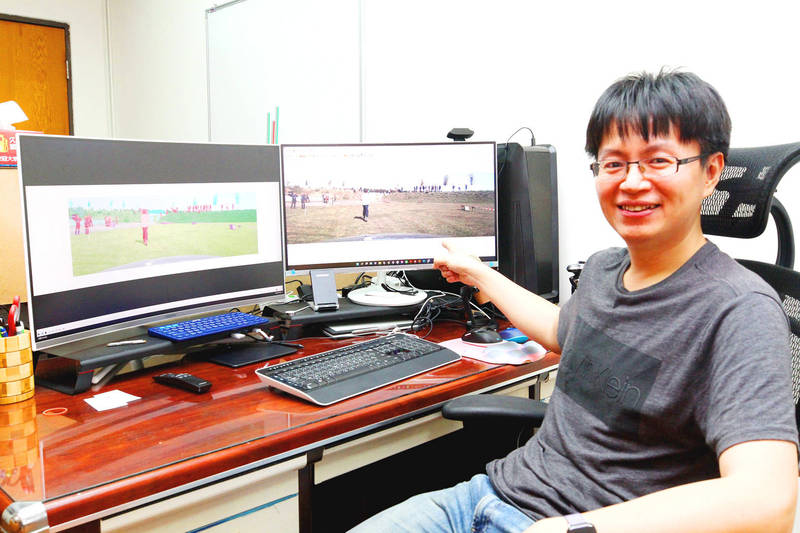《TAIPEI TIMES》 NCKU team places first in global tech contest

Professor Chih-chung Hsu, who led his research team in developing a high-accuracy technology for scene recognition in rural environments, points at their work in an undated photograph. The monitor on the right displays an unprocessed scene, while the monitor on the left shows an image after semantic segmentation. Photo provided by National Cheng Kung University
/ Staff writer
National Cheng Kung University’s (NCKU) visual perception algorithm for self-driving vehicles won the top spot in a global pattern recognition technology contest.
Visual recognition algorithms are a key component of self-driving vehicle technology, which is transforming transportation and the auto industry worldwide.
A limiting factor of the current generation of visual perception algorithms is that they were generally designed for use in structured urban environments, making them less capable in a rural setting.
Leading a team of four students, NCKU statistics professor Chih-chung Hsu (許志仲) developed a new visual perception technology capable of accurate recognition in an irregular visual environment.
Their technology won first prize from a field of 53 teams in the semantic segmentation challenge at the German Conference on Pattern Recognition, an annual symposium hosted by the German Association for Pattern Recognition (DAGM).
Utilizing statics as a diagnostic tool for identifying driving system blindspots in rural areas
Similar to human visual perception, self-driving vehicles utilize visual perception to recognize the spatial environment in front of the vehicle before making a decision to stop or go.
For the most part, currently available visual perception technology was optimized for scene understanding in structured, urban environments with regular and orderly scenes. In contrast, irregular and disorderly scenes are predominant in natural or suburban environments.
Transitioning from an urban environment to a rural one typically cuts the accuracy of scene recognition from 80 percent to less than 60 percent. This problem presents one of the industry’s most significant technical challenges and opportunities.
“Due to the limitations of the conventional AI [artificial intelligence] module the team utilized, we initially placed between seventh and 12th in the challenge, which ran from June to September,” Hsu said.
“The team was able to identify the blind spots of the technology in irregular scenes by using statistical analysis to hone in on failures that occurred [because of] bushes, in woodland and on country roads over a half-month period,” he said.
“With this knowledge, the team replaced the module with new ones that combined the ability to process complex scenes and semantic segmentation,” Hsu said. “Continuous fine-tuning of the modules then enabled the team to take the lead after its score rose from 47 to 65, ultimately winning the challenge with a score of 69.”
Multidisciplinary teamwork was key to the team’s success
Hsu took a different approach in putting together his team. While other teams recruited heavily from electrical engineering and information technology departments, Hsu’s team consisted of two statistics students, an electrical engineering student and an information technology student.
NCKU statistics students Kao Han-yi (高涵毅) and Wang Hsien-yun (王先昀) worked on team support by sifting through the data to make predictions and analyze results.
NCKU electrical engineering student Huang Po-cheng (黃柏盛) and National Pingtung University of Science and Technology information technology student Liao Wo-ting (廖涴婷) modified the modules and implemented strategies.
“The team made a major breakthrough in the field of visual perception for self-driving vehicle technology,” Huang said. “Being a part of the challenge has been a valuable experience that will help my future research.”
NCKU is celebrating its 90th anniversary with a series of activities.
For more information, visit the event’s Web site at https://90th.ncku.edu.tw/.
新聞來源:TAIPEI TIMES











